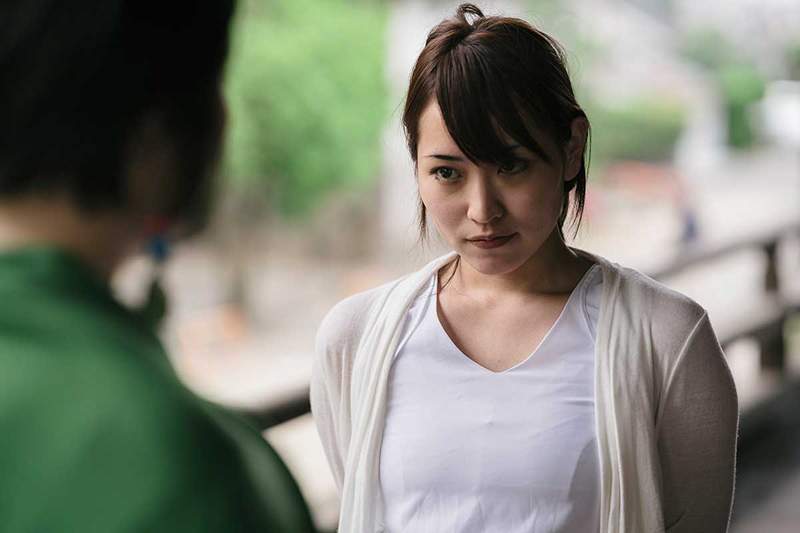Taijin Kyofusho disorder, a Japanese phobia

- 4074
- 1271
- Miss Drew Stroman
There are many types of disorders detected thanks to research in the field of psychology. This allows to treat and consider the different diseases. One of the most common disorders is known as Taijin Kyofusho. Let's see it.
Content
Toggle- What is the Taijin Kyofush disorder
- Categories and characteristics of Taijin Kyofush
- Treatment
- Conclusions
- References
What is the Taijin Kyofush disorder
The Taijin Kyofush disorder is a disorder on which many studies have been conducted. Although the name of this disorder may seem a bit strange and distant, it is something very common with what we live in everyday life.
Taijin Kyofush is described as a subtype of anxiety disorder. Specifically it refers to people with social phobia, in which the affected person fears and avoids all social contact.
However, although it may seem that this disorder arises from fear of being judged by others, it is not about that. Rather, people who suffer from this disorder are a irrational fear of offending or harming other people.
This derives in an avoidative behavior, so that it avoids relating to other people. Moreover, the person enters a kind of Vicious circle of judgments and reproaches Towards herself, getting to have hypochondriac behaviors.
Categories and characteristics of Taijin Kyofush
The name of this disease, as we can deduce, comes from Japanese. In fact, in Japan there is an official diagnostic system of this disorder, which in turn is divided into various types or categories.
- Sekimen-Kyofu: People who show a phobia to blush are diagnosed.
- Shubo-Kyofu: It is presented in people who have a phobia to have a deformed body.
- Jikoshisen-Kyofu: Refers to those who have a phobia to maintain visual contact.
- Jikoshu-Kyofu: Another type is this, which refers to the phobia to have a bad body smell.
To diagnose a person with this type of syndrome, it is necessary to make an observation of their Behavior and attitudes patterns, and even analyze your appearance and way of relating to yourself.
These people feel that their way of being, their behavior or physical appearance can cause rejection by others. When this happens, some Feelings of fear, anguish, anxiety and deep suffering In the affected person.

The most common way to express it is to close completely to have social relationships. And these people are most worried is not to be able to maintain healthy relationships with others.
Therefore, when they have to socialize or know that there are going to be social situations in which they must be related, they will try by all means to avoid it. In no case will they be seen with the capacity or energy to at least try.
This is The main characteristic of Taijin kyofush disorder. But how was this diagnosis and how its treatment can be addressed? The Japanese standard treatment for Taijin Kyofusho is morita therapy.
 Intrusive thoughts: Why do I always think bad things?
Intrusive thoughts: Why do I always think bad things? Treatment
This initial way of treating patients who present this disease was developed by Dr. Shoma Morita in the 1910s. This is a series of exercises and jobs to deal with the mental disorders produced by this disease.
In its origins, the treatment consisted of the insulation of the patient, forced rest in bed, write a newspaper, make a manual work and attend a series of conferences taught about the importance of self -accept.
However, since the 1930s, the treatment was modified to include extrahospital patients and group treatments. It is also common to use medication to better assimilate treatment.
For this, the milnacipran, substance that acts as a serotonin reuptake inhibitor and noreprenaline. This is also widely used to treat more generic disorders, such as social anxiety.
All this must be diagnosed by a professional in psychology, who will know how to act and what treatment should the patient follow. While the name has been coined in Japan, it is a disorder suffered by people worldwide.
In fact, Anxiety and social phobia are evils with which many people live together. In this, the lack of self -esteem and a lack of self -acceptance also comes into play that makes these people who present this disorder have an irrational fear of being rejected by their environment.
The important thing is to know that it can be treated and that the person can overcome this problem, although this requires a conscientious job and in which the patient must be collaborative to gradually overcome these fears and phobias.
Conclusions
In short, Taijin Kyofusho disorder can greatly affect the person who suffers from it, so it is necessary to carry out psychological therapy to live with him in the best possible way. Only in this way can the affected person lead a normal life.
References
- Taijin Kyofusho: a form of social anxiety disorder that responds to serotonin reuptake inhibitors? https: // academic.OUP.com/ijnp/article/4/3/231/976204
- Taijin Kyofusho: diagnostic and cultural problems in Japanese psychiatry. https: // link.Springer.com/article/10.1007/BF00114612
- Essau CA, Sasagawa S., Chen j., Sakano and. (2011). Taijin Kyofusho and social phobia symptoms in young adults in England and Japan. J. CROSS CUL. Psychol. 43
- Maeda f., Nathan JH (1999). Understanding the Taijin Kyofusho through its treatment, morita therapy. J. Psychosom. Beef. 46
- http: // citeerx.IST.PSU.Edu/Viewdoc/Download?doi = 10.1.1.519.4986 & rep = rep1 & type = pdf
- https: // www.NCBI.NLM.NIH.GOV/PMC/ARTICLES/PMC3563044/

